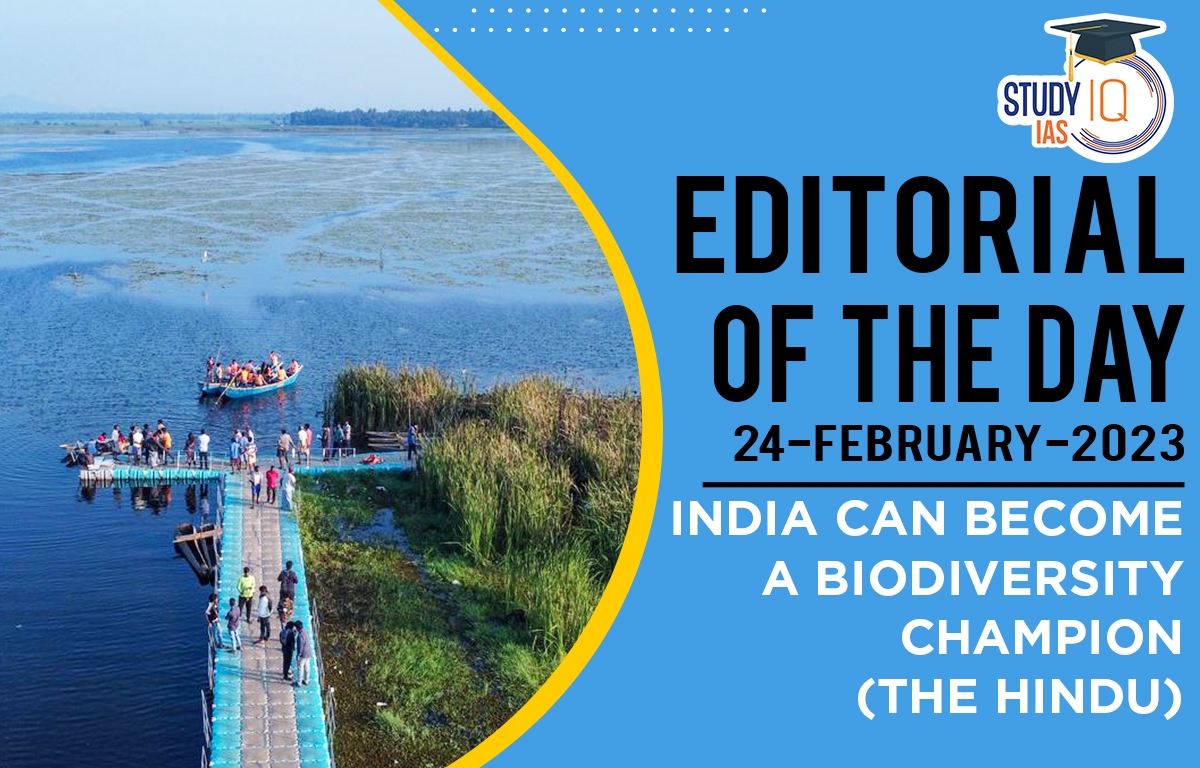Table of Contents
Biodiversity, which is the sum and variation of our biological wealth, is critical for the future of our planet.
- The importance of our planet’s biodiversity was acknowledged during the United Nations Biodiversity Conference in Montreal, Canada.
- Representatives of 188 countries adopted an agreement to “halt and reverse” biodiversity loss by conserving 30% of the world’s land and 30% of the world’s oceans by 2030, known as the 30×30 pledge.
- India has 17% of the planet’s human population and 17% of the global area in biodiversity hotspots, making it a strong contender to guide the planet in becoming biodiversity champions.
How has India Responded to the 30X30 Pledge?
- The Union Budget 2023 has highlighted “Green Growth” as one of the seven priorities or Saptarishis.
- The emphasis on green growth is critical as the country is facing serious losses of natural assets such as soils, land, water, and biodiversity.
- The National Mission for a Green India seeks to increase forest cover on degraded lands and protect existing forested lands.
- The Green Credit Programme seeks to incentivize environmentally sustainable and responsive actions by companies, individuals and local bodies.
- The Mangrove Initiative for Shoreline Habitats & Tangible Incomes (MISHTI) emphasizes on the importance of mangroves and coastal ecosystems in mitigating climate change.
- The Prime Minister Programme for Restoration, Awareness, Nourishment, and Amelioration of Mother Earth (PM-PRANAM) aims to reduce inputs of synthetic fertilizers and pesticides, making it critical for sustaining our agriculture.
- The Amrit Dharohar scheme mentions biological wealth and seeks to encourage optimal use of wetlands, and enhance biodiversity, carbon stock, eco-tourism opportunities and income generation for local communities.
- If implemented properly, this scheme will benefit aquatic biodiversity and ecosystem services.
Science-based Approach
- Need: A science-based approach will not only help in getting success for these efforts but also in documentation and implementation of lessons learnt for replication, nationally as well as globally.
- Modern valuation of biological wealth: Programmes must use modern concepts of sustainability and valuation of ecosystems that consider ecological, cultural, and sociological aspects of our biological wealth.
- Economic value: Benefits to ‘resource people’, and fund-services should be considered as the economic foundation for generating value of the resource.
- Sustainable practices: The future of our wetlands depend on the how fast are we migrating to less-water intensive crops such as millets as well as investments in water recycling in urban areas.
- Ecological restoration based on available knowledge: Green India Mission must focus on ecological restoration rather than tree plantation. Sites that can contribute to ecological connectivity in landscapes fragmented by linear infrastructure must be chosen.
- Species must be chosen based on available knowledge. They must be resilient to emerging climate change.
- Ecosystem as a whole: For mangrove restoration programme, there must be greater emphasis on diversity of mangrove species with retention of the integrity of coastal mud-flats and salt pans.
- Community participation: Both local and nomadic communities must be taken into confidence when these initiatives are implemented.
- Traditional knowledge and practices of these communities must be integrated into the implementation plans.
Conclusion
- Each of conservation programmes has the potential to greatly improve the state of our nation’s biodiversity if implemented based on the latest scientific and ecological knowledge.
- They must include significant educational and research funding to critically appraise and generate awareness on India’s biological wealth.
- National Mission on Biodiversity and Human Wellbeing, already approved by the Prime Minister’s Science, Technology, and Innovation Advisory Council (PM-STIAC), has potential to create awareness on biological wealth.
- It will help in harnessing the power of interdisciplinary knowledge — for greening India and its economy, to restore and enrich our natural capital, and to position India as a global leader in applied biodiversity science.


 Daily Quiz 03 July 2025
Daily Quiz 03 July 2025
 Dalai Lama Confirms He will have a Succe...
Dalai Lama Confirms He will have a Succe...
 List of Awards and Honours Received by N...
List of Awards and Honours Received by N...





















